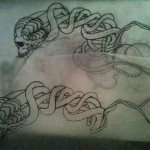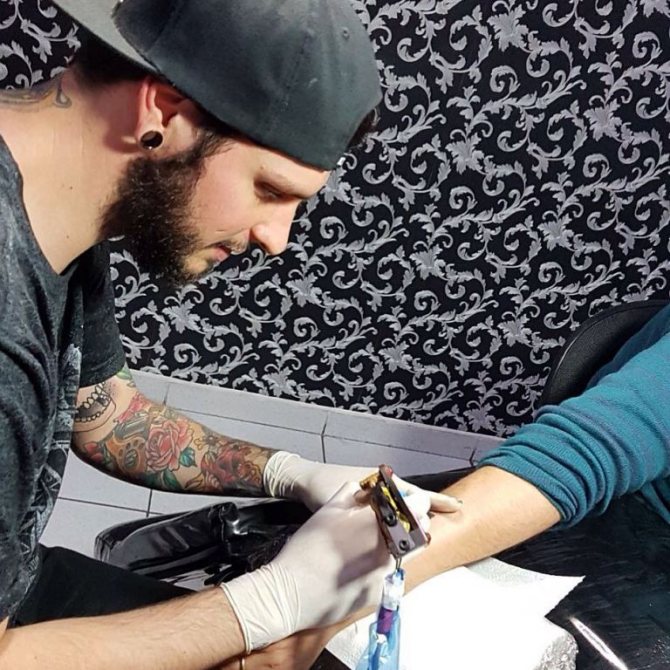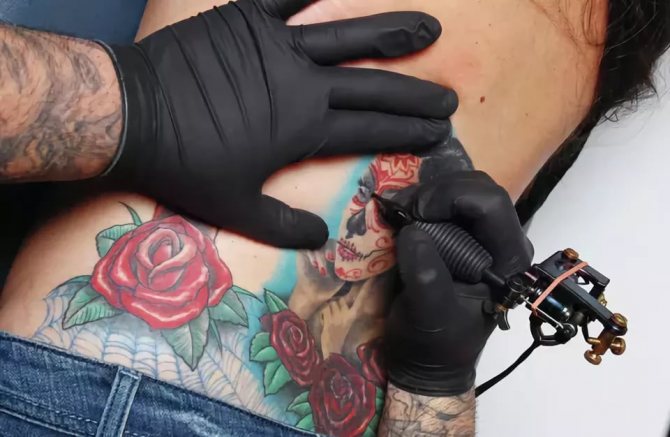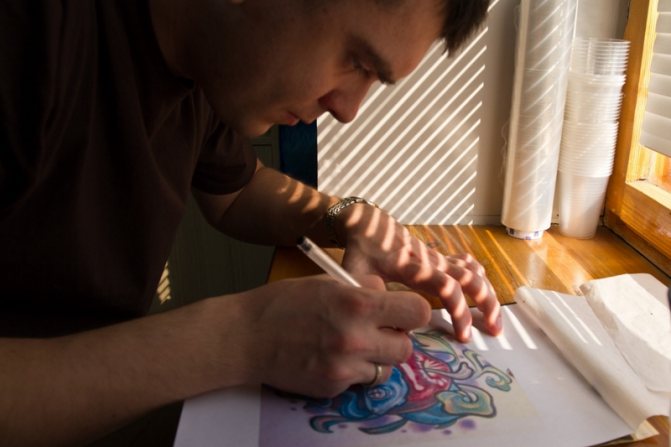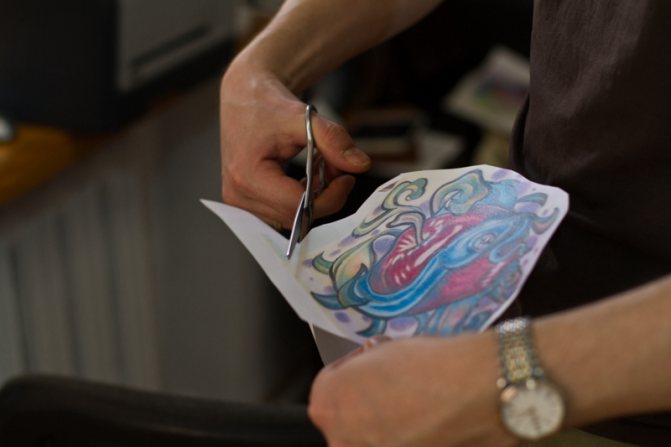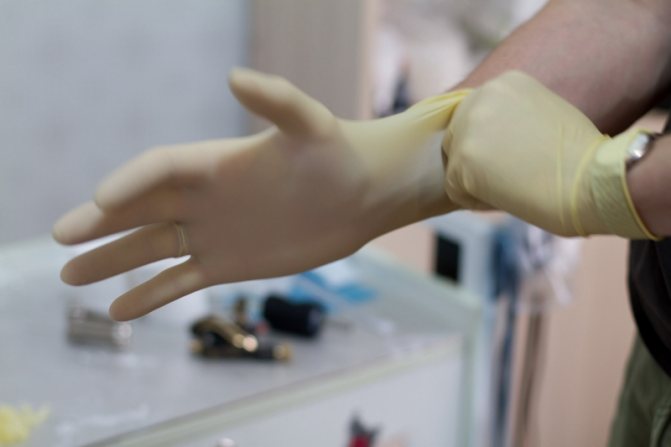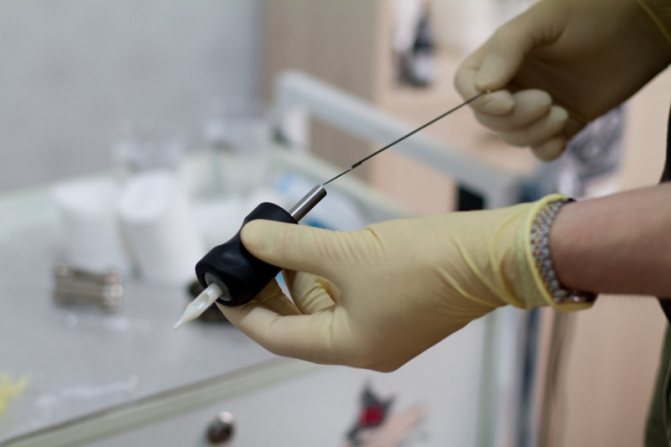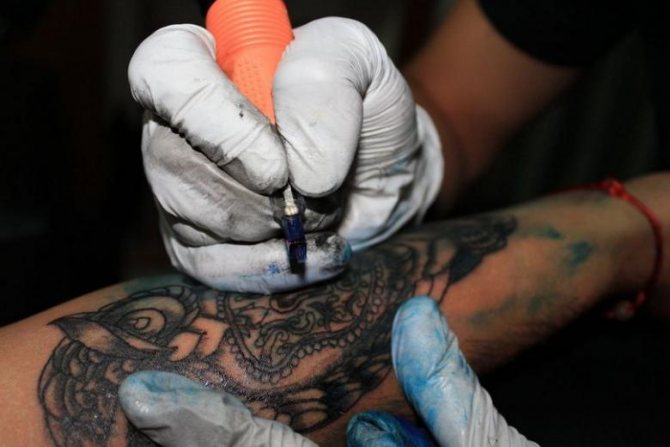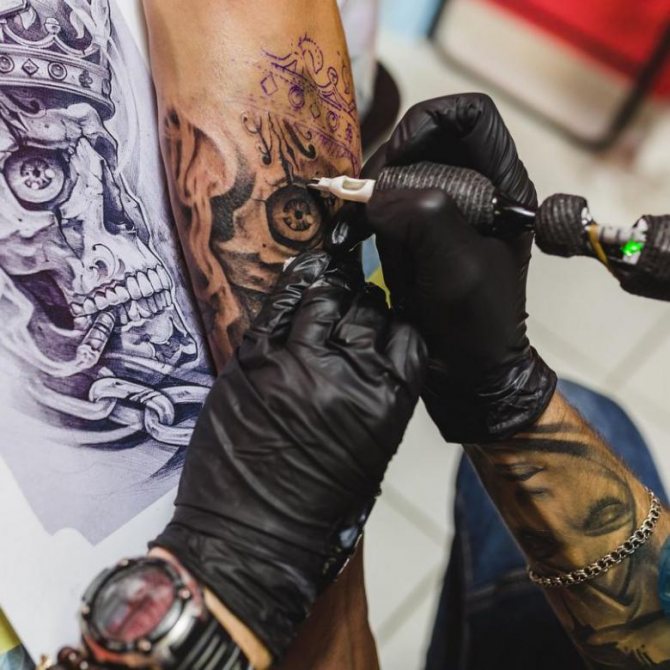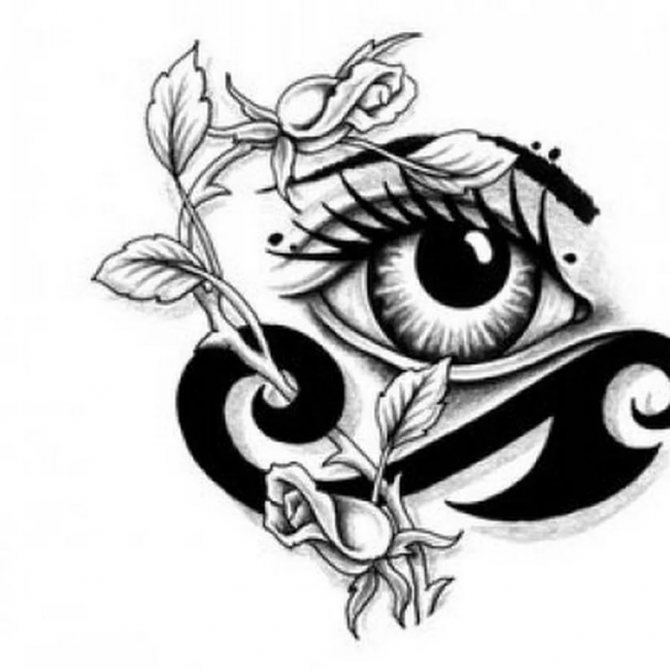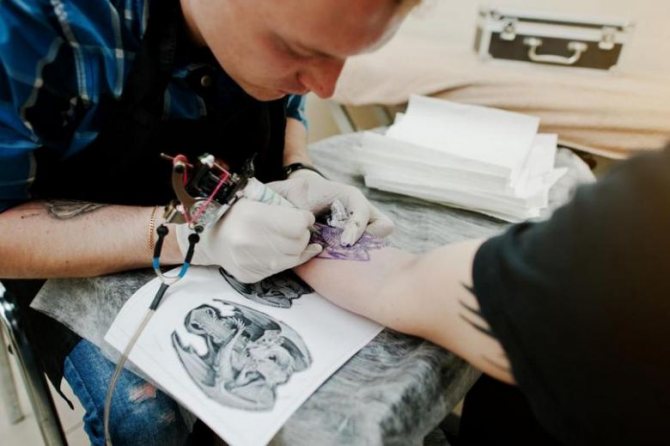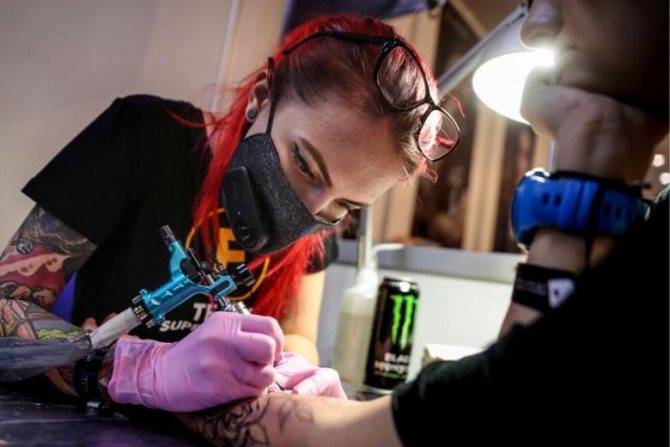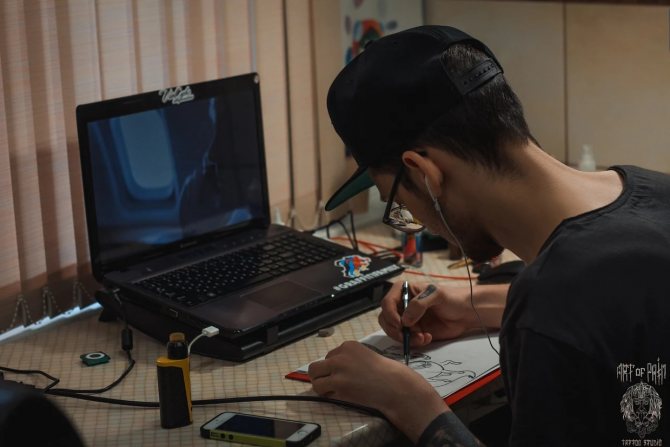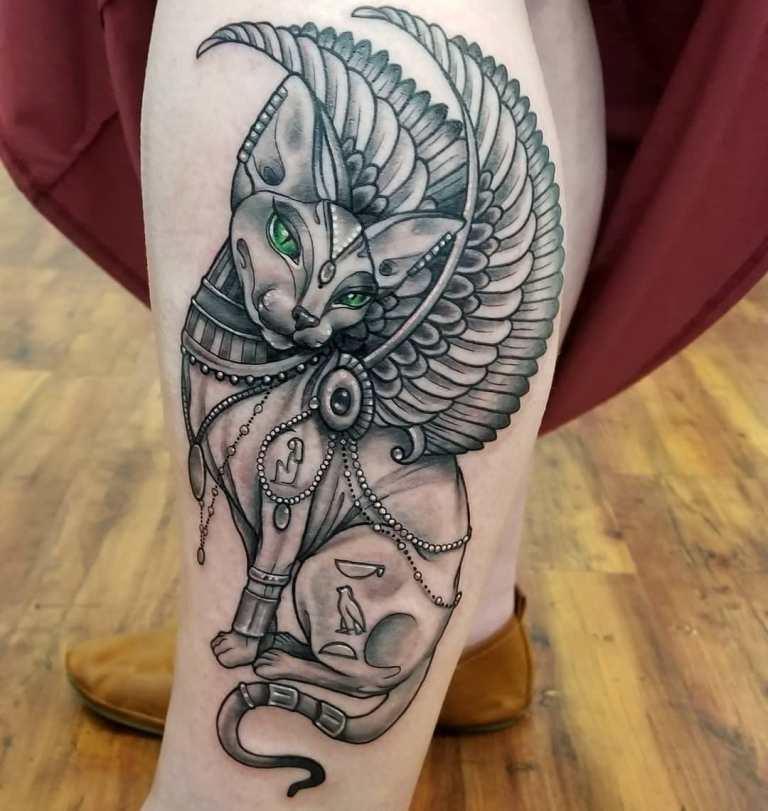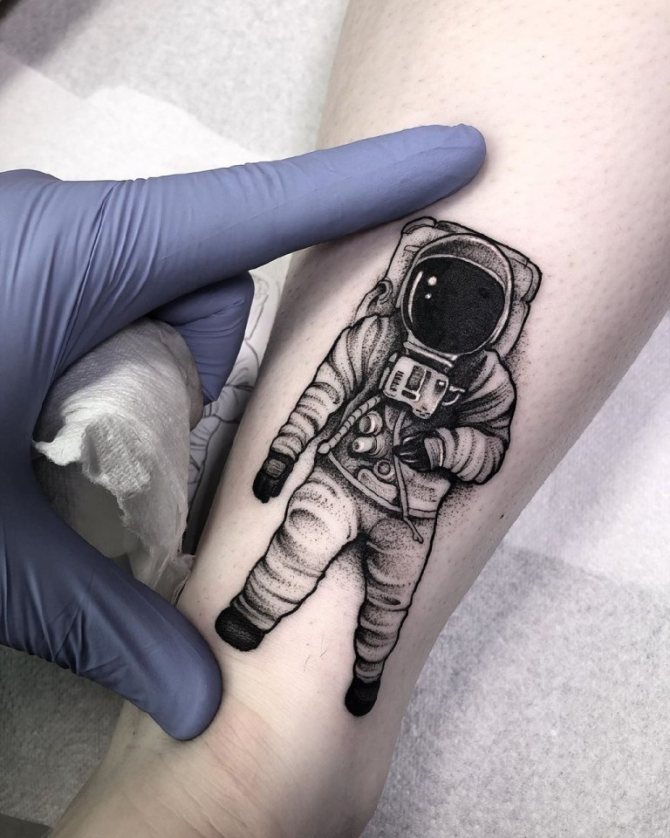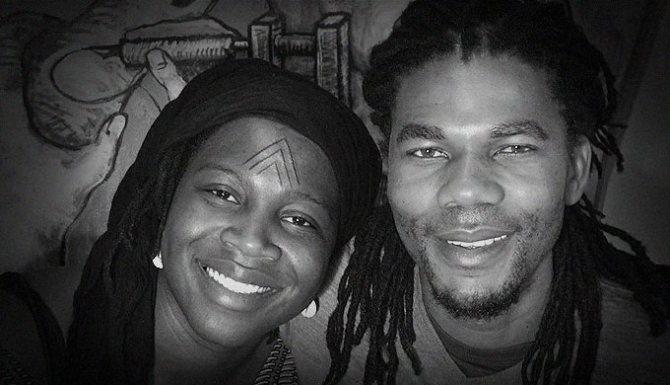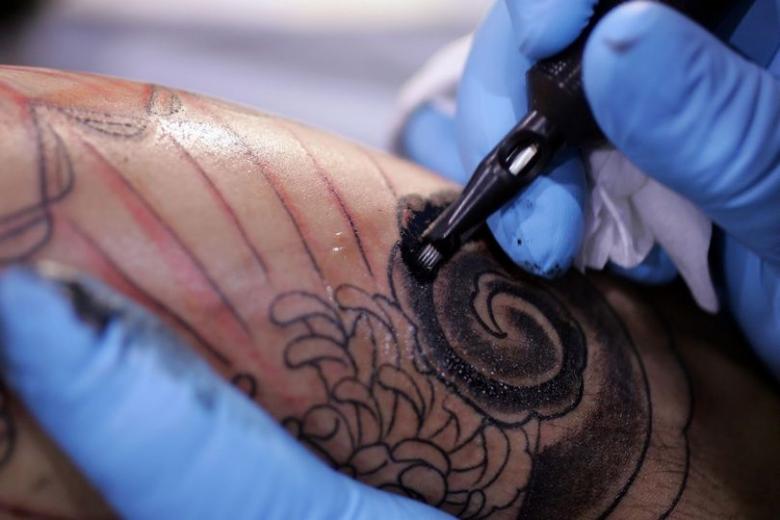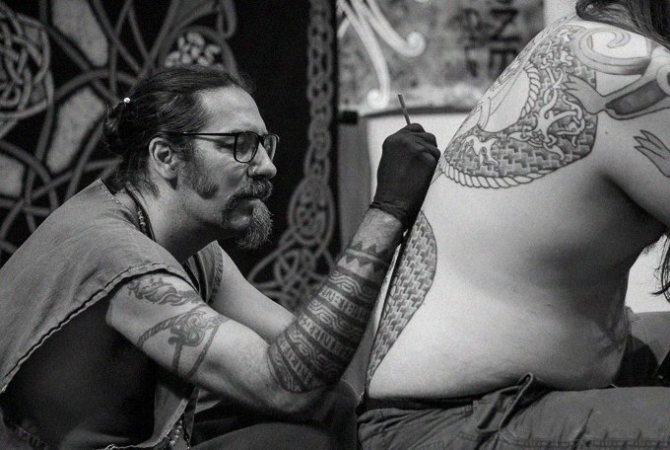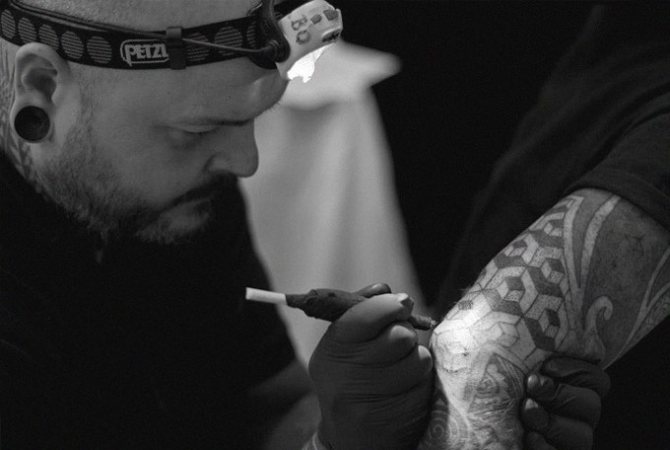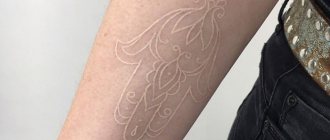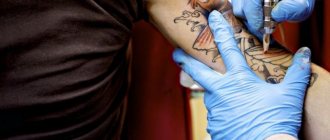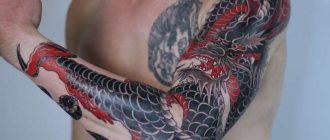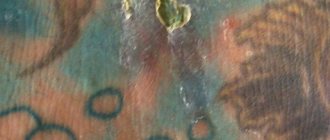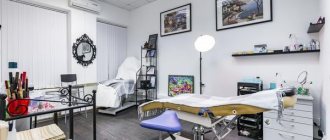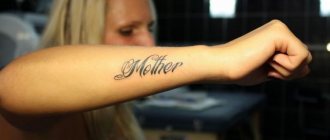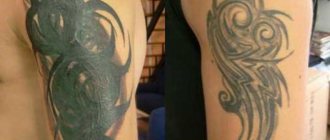The process of tattooing begins with the choice of sketch. Modern masters have gained tremendous experience, so the body can be decorated "to any taste": a pattern, an ethnic symbol, a realistic portrait, etc. We offer some tips on how to decide on the choice of design, location and style.
- Leaving in a tattoo salon, it is necessary to know approximately what you want. Pick up a few images, and then the master with your wishes will create a sketch. This process may take quite a long time.
- Study the history of the style you like, go deeper into symbolism, if you are going to apply tribal signs or sacred patterns.
- Choose a location. The tattoo must be appropriate, proportional, detailed - what is good for the forearm is unlikely to work for the back. It is easiest to get tattoos on calves, back, buttocks, chest, shoulders due to the peculiarities of anatomy. On fingers, wrists, ribs, face, the surface of the body is uneven, which complicates the task for the master and requires a careful fitting of the figure. Important! Quality of the tattoo always depends on the features of the skin, its shade, the structure of the body.
- If you want a small tattoo, the drawing should be simple and laconic, because the process of applying paint on the skin differs from drawing on paper.
- Choosing a master, give preference to the one who works in the technique you choose, look at his portfolio, especially recent tattoos.
What happens to the skin
Damage of skin with a needle during tattooing and introduction of foreign particles (coloring pigments) into epidermis or derma causes a natural protective reaction of human body - inflammatory process. It is a non-microbial (aseptic) reaction, which, depending on the size and localization of the injury, lasts on average 7-10 days and ends with complete healing of the wound surface (the healing process is rather long).
In order to avoid secondary infection, all hygiene rules should be strictly observed and antiseptic means should be used. This implies not only sterilization of the tool during the procedure, but also the appropriate treatment of the skin, keeping the workplace clean, as well as the implementation of all recommendations on tattoo care.
Harm

The most significant harm from tattoos is the possibility of contracting an infectious disease. Therefore, you need to be careful to disinfect the entire process and follow-up care.
The next point is the harm of the pigments themselves. They must be of good quality, because wearing ink is not what your skin dreams about. Because of them there can form an allergy, therefore it is desirable to learn exactly what pigments were used in order to cope more effectively with this problem.
Also the composition of the ink for tattooing is quite toxic, it includes metal oxides and other chemical elements such as copper, zinc, barium, cadmium, mercury. Getting into the blood and subsequently into the organs can lead to acute illness or exacerbation of chronic diseases.
It is not uncommon now to meet people with a psychological addiction to tattoos who cannot resist the opportunity to score a blank patch of skin. Only a psychotherapist or psychiatrist can help here.
Skin reaction
- Damage to the epidermis, connective tissue fibers, as well as skin cells and blood vessels. The result is petechial hemorrhages.
- Aseptic inflammation develops in the injured area, accompanied by capillary dilation and blood overflow. The capillary walls become thin and permeable, as a result plasma and blood cells (leukocytes and erythrocytes) begin to penetrate into the surrounding tissues. Visually this process is assessed as the appearance of edema and redness on the damaged skin area, accompanied by a local increase in temperature.
- The immune systems of the body fight the inflammation: macrophage cells accumulate around the damaged area, which begin to absorb the destroyed fibers and cells that have lost vitality. Their task is to destroy around the inflammation site everything that interferes with the processes of normal tissue activity. However, it should be taken into account that the particles of the dye composition are also perceived by macrophages as foreign bodies, and the defensive cells try to remove them as well. The "eaten" pigment gets inside the macrophage, but it is not destroyed by it, but accumulates in the cellular cytoplasm, in this case we speak about incomplete phagocytosis. As a result of such reaction of the body, macrophages die and tattoo pigments remain in the skin.
In parallel with phagocytosis there is a process of regeneration (restoration) of the damaged skin:
- fibroblast cells begin to actively produce collagen and elastin fibers, which fill the defect formed in the tissues and as if braid the dye particles, delimiting them from the adjacent tissues;
- intensive division of epidermal cells begins, which leads to closure of the damaged skin area. This process takes place under the crust that forms immediately after the injury and acts as a kind of protection against the penetration of foreign microorganisms into the wound. After the processes of inflammation and regeneration are completed, the dye particles remain in the skin for a long time. However, the intensity of coloring, clarity, contrast and stability of the body image depends on many factors (in particular, on the type and condition of the human skin).
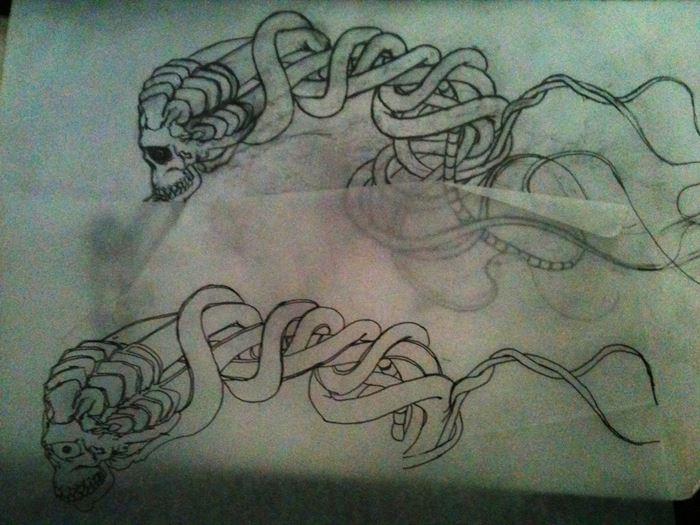

How to choose a master or a studio?
Nadya Marynina
Tattoo does not make you a studio. It is better to be guided by the master, his stylistics and quality of the healed works. A good tattooist is an artist. His work must be competent, aesthetic, correct in terms of drawing. Many people now do "crooked" tattoos and call it their style. But even stylization can be good, and it can be not so good. My heart breaks when I see crooked faces on tattoos or a cabbage instead of a peony. Follow the master on social networks. Are you happy with the result? Do you like the style?
And don't get a tattoo for a couple of thousand rubles, nothing good will come of it. The cost of a tattoo includes the price of consumables, the time and effort spent by the master, and sometimes the creation of a sketch. This is hard work, so the tattoo is expensive. It is not worth saving on it.
Activities before the application
The master must establish contact with his client and conduct a thorough and detailed briefing. He must tell in detail what can and what is not recommended to do during the procedure, what the possible consequences or complications are after it. For the client should not be a secret such information - he has the right and should know it.
Before going to the tattoo salon it is strictly forbidden to take alcohol
. It is connected with the fact that alcohol dilates blood vessels. When working with the skin master will certainly use the needles. This means that the puncture will inevitably affect the blood vessels, which means that there will be small bleedings. And if the blood vessels are dilated from the effects of alcohol on them, it is difficult to call such bleeding small - and it is much more difficult to stop it. In addition, when taking alcoholic beverages, as a rule, the blood pressure rises. And this promotes the activation of hematopoietic processes - and as a result
The dye is washed out of the skin.
.
In preparation for the procedure, the skin is subjected to special treatment. The selected area is carefully freed from the hairs, shaving them. Then the skin is degreased and disinfected with special compositions. The degreasing procedure is carried out with the use of green soap or an alcoholic solution.
After that, the skin is treated with gel or gel deodorant. The product should be applied evenly and thinly, otherwise You run the risk of a fuzzy and unclear image
.
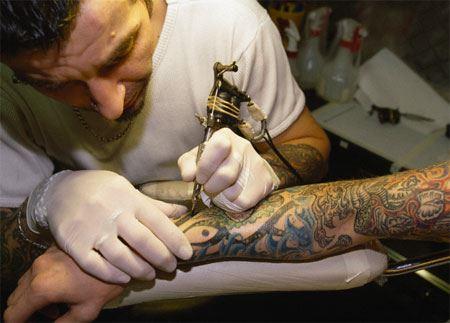

What is used for tattoos?
A number of people confuse tattooing with henna drawings. Getting tattoos is not exactly easy. The genuine ones are created in the salon with a machine that is equipped with fine needles.
Being in a state of constant vibration, the needles create punctures in the skin, which are filled with a special dye pigment. The paint enters the needle through a hole. But if the tattooing machine is an older model, the master has to dip it into the paint himself in the process.
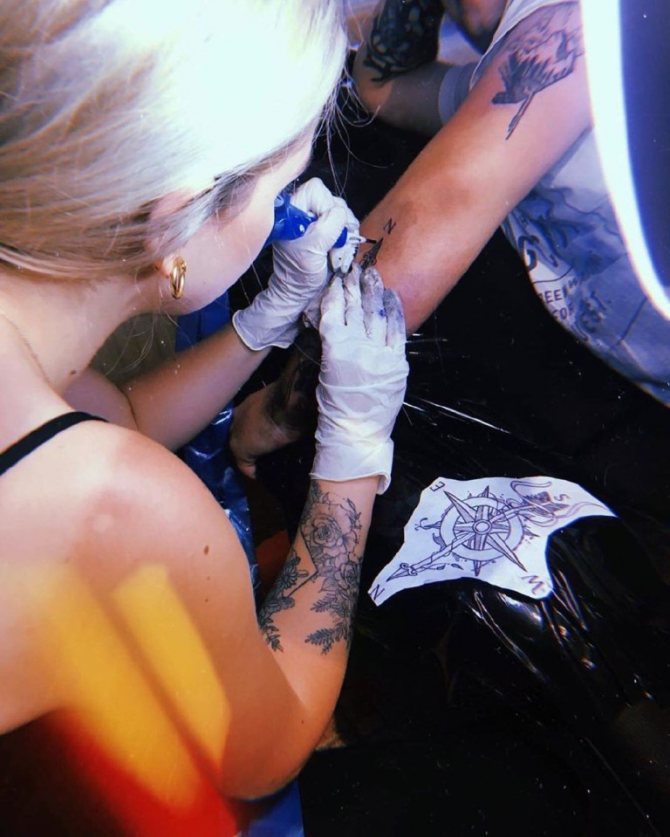

Tattoo is an indelible drawing on the body, which is applied by piercing the skin and making the dye pigment in the dermis.
The images, applied with the help of modern machines, turn out very realistic. As a rule, the procedure is painless. The shallow depth of the punctures eliminates the risk of vascular damage. Tattooing equipment must be thoroughly sterilized after each use.
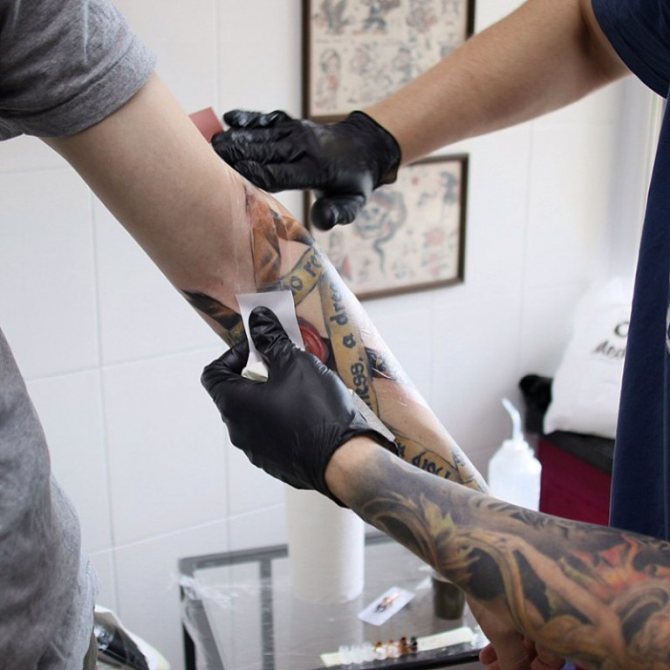

Many salon clients describe their sensations on the master's table as a pleasant, slight tingling sensation.
Some tips for the person who has decided to get a tattoo:
- It is very important that the client at the time of visiting the salon is in a good mood. Then the person is more relaxed and calm, and the procedure of drawing on the body is more successful and with less pain.
- For girls it is better to apply a tattoo in the period between menstruation.
- Tattooing is a stress for the body. Therefore it is not recommended to visit the studio: while intoxicated or with a hangover, during the post-operative period, menstrual cycle, pregnancy, because in these cases, the quality of the tattoo will leave much to be desired. In advance, inform the master about your skin diseases and allergic reactions (if any). This will help prevent side effects as the skin heals.
- If you are interested in the quality of your future tattoo, ask the tattoo artist for photo album of his work
. Photos with tattoos will tell you more than any diplomas hanging on the wall in the studio. If you can't decide on the subject of the tattoo, the master can hold a consultation and will surely lead you to the desired result. Also pay attention to the existence of documents, giving permission for this kind of activity (conclusion of a contract with the Sanitary and Epidemiological Station). And in general, the best guarantee of quality of the master is a recommendation.
How do tattoo and its cost


Tattooing is a temporary tattoo in the form of make-up on the face, which allows you to emphasize facial features, correct asymmetry, hide scars and scars.
All the stages of application and healing are absolutely similar to the usual tattoo, the only difference is in the tool and pigments. The tool looks like a large writing pen, only instead of a rod, it has a thin needle. Such device pierces only 0.5-1 mm deep into the skin. Because of this and because of the pigment composition for the tattoo is not as harsh as for conventional tattoo, it lasts from 1 to 5 years.
The cost depends on the complexity of the tattoo, for example, a camouflage of the scar can cost about 10000 rubles, and so the average price for one element, be it lips, eyebrows or eyes ranges around 5000 rubles. Keep in mind that a significantly lowered price is a sign of thinking about the level of the master and the quality of the paint, and remember that this is the same tattoo and to withdraw it will be as difficult as permanent.
Sterilization of tools before tattooing
To begin with, the working place of the tattoo master should be clean. The air inside the room can be cleaned
With the help of an ultraviolet lamp. The needles used - different for tattoo and permant - must necessarily be disposable!
Each needle (or combination of needles) is soaked in a disinfectant solution, such as Lysitol or Baracidal, for at least one hour after manufacturing. Then it is washed with running water, dried, sealed in a Kraft bag and sterilized in a dry oven or autoclave at +130 ° C for 1.5-2 hours.
Nozzles that hold the needles during the instrument tattoo master must be sterilized before each use. The rods on which the needles are soldered are also sterilized after each use. To do this, they are first placed in a disinfecting solution, then washed in running water, dried and after soldering a new bunch of needles is subjected to dry-heat treatment (at a temperature not less than +130 ° C).
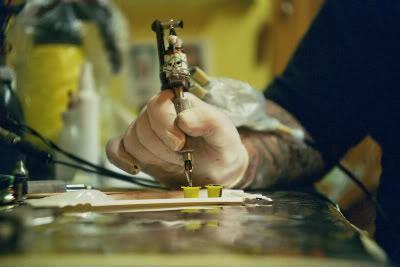

Removable collets used to fix the needle should be sterilized in a disinfectant solution (Lysitol, Lysoformyl) and then with ultraviolet light. They are not subjected to hot treatment, because they are made of plastic.
. Some models are intended for single use.
Syringes used for anesthesia in permanent make-up procedures are also sterilized. For example, the carpula syringe used to anesthetize the lips in permanent makeup procedures is made of surgical steel and So it is sterilized like all metal instruments.
. The syringe is supplied with special, very thin disposable needles.
Trays for storage of the tool during work after the end of the process of tattooing are washed in running water, placed for an hour in a disinfecting solution and completed sterilization by dry-heat treatment. In Russia, an instrument is considered sterile if it has been treated with dry air in a dry-heat oven at +200 degrees Celsius for half an hour or in sterilizers at +260 to +300 degrees C for 15 seconds.
Brushes for permanent make-up are also sterilized. They are made of the hair column, so during sterilization you can use only disinfectant solution and UV light or a special solution for sterilization of brushes, used by makeup artists and makeup artists.
The stand for the caps is made of hard plastic and does not need high-temperature sterilization. It simply needs to be rinsed under running water, dried and treated with ultraviolet
. For more sterility, before starting the work, a film should be placed on (or into) the plastic holder and only then the caps with paint should be put on it.
The metal sprayer is used in both tattooing and permanent makeup. A special disinfectant is poured into it - green soap, which, in addition to its disinfectant properties, has a good cleaning effect, which is very convenient for removing excess paint from the drawing during work.
Kraft pouches are indispensable for sterilization. They come in different sizes and are used to keep instruments sterile. They are made of special paper and polyethylene. Instruments are packed in the bags before the high-temperature treatment. There is an indicator on each bag that informs about the end of the sterilization process. The sterilized instruments can be stored in a hermetically sealed kraft bag for up to one month.


Always make sure that the handyman is wearing medical gloves. They protect both the handyman and the client from possible infection
. When choosing them, it is important that they are intact and fit your hands snugly.
Medical gloves are also in fashion. For example, in addition to the standard white color, there are gloves in black. With or without talcum powder. By the way, sometimes talc can cause an allergic reaction.
And German specialists have developed special surgical gloves. Outwardly they do not differ from the usual. Made of latex, but have two layers between which is a substance with powerful antiviral effect. This innovation further reduces the risk of infection transmission and makes it almost negligible.
If the packaging with gloves is not written that they are sterile, then before the work they should be disinfected with alcohol or other disinfectant solution.
Criteria for choosing tattoo masters courses
- Teach should be practicing masters with a lot of experience.
- Do not confine yourself to theory - choose courses with practice on models.
- Focus not so much on the duration, as on the intensity of the curriculum.
- In addition to narrow professional knowledge, the course syllabus should include drawing techniques, sterilization and post-padded skin care standards, and photography instruction.
- Give preference to courses with post-graduation support.
The listed knowledge and skills are included in the Art of Pain studio course curriculum. In addition, you will be taught styles, trends, current trends, layout and techniques for transferring a sketch to leather, and how to handle a typewriter.
Training from scratch. Initial drawing skills are a prerequisite.
Copying a drawing from paper to the body
To transfer a sketch of an image on the body, the contours of the image are transferred through a carbon copy on tracing paper. The resulting impression is attached to the skin, smeared with a special compound, and print the picture. On the skin remains the contours on which the master will tattoo.
The method of applying the original outline is determined by the master himself. This is influenced by many things: personal motifs, the condition of the customer's skin, the peculiarities of a given pattern, the location of the drawing and the degree of technical equipment of the workshop.


In the process of drawing the outline of the pattern, the usual tool is a transfer pencil or pen. The tip of such a tool is usually dipped in special transfer ink. Contour lines can be drawn only once.
Therefore the hand of the master should possess sufficient firmness and accuracy. The slightest inaccurate movement - and the picture will be irreparably spoiled, and you have to wear such a tattoo for years. Transitions of light and shadow are marked in the process of making the pattern, when the master is working with the dye.
Sometimes to perform a rough drawing, experts use the so-called three-layer paper. On its first sheet you can already see the image itself. The second layer will be the copying layer. And a thin translucent paper is used as the third layer. During this stage of the work, the elements of the drawing are transferred to the third layer, that is, to tracing paper, and then - to the human body area. There is a chance of complications when working with such paper: the base paper can be displaced. Therefore, the translation of this kind of pattern requires particular care and accuracy.
Very experienced master, as a rule, performs his work by eye. When performing this operation, a pen with a helium rod is usually used. This method of application has its distinct advantages: mistakes in this case are very easy to correct, it is enough just to erase the previously drawn lines. So the correction of the drawing is easy and painless. And the individual features of the human body do not become obstacles to the drawing - they can even be used as additional elements in the pattern.
Size Matters
A small tattoo is rarely a good one. If it is a tightly packed black circle with a diameter of 2 centimeters - it's okay, but the more details in the picture (contours, color transitions, etc.), the larger it should be.
This is important not only because of aesthetics. A thin outline (less than a couple of millimeters) holds up worse and over time will begin to "float. If the tattoo is black, there is no way to fix it.
The size of the design, in turn, dictates the place of application, and there are styles that, all things considered, cannot be done finely. If you want a realistic portrait, prepare the shoulder, back or other large area.
Applying the tattoo
After this begins the actual process of applying the tattoo. Tattoo masters give preference to those machines that work from the mains. The picture turns out clear and uniformly colored. These machines minimize damage to blood vessels and cause much less pain for the client than other machines. What complaints can the client have? Except a slight tingling sensation in the area of the drawing.
First, the contours are filled. Then the filling and shading are done.
In tattooing, the paint is injected with needles into the upper layer of the skin epidermis to a small depth. After the punctures heal, the dye remains in the skin.
Do not aim to do the tattoo all at once. Set yourself up for a long process of tattooing. Usually several sessions are required. On the first one, the outline is done. On the second, the main color is painted over. On the third, coloring, shadowing, and final finishing. After complete healing, it is advisable to visit the master again to correct possible paint loss. The most important thing is not to be in a hurry and not to want to finish quickly. If you are tired, tell the master, perhaps you need a break or the end of the session. In general, report all your sensations to the master.
Methods of reduction


Whatever method you use, you should remember that the skin will never recover to its former state and the area of its trauma will always be greater than the painted pattern. Nevertheless, tattoo reduction techniques are now achieving good results.
Thermal method: the most highly developed method, performed with a laser. This method allows for tattoos of any size and complexity, in addition it is used for its correction.
Mechanical method: removal of tattoos by dermabrasion. Dermabrasion is a layer-by-layer grinding of the epidermis. It is suitable for removing small size tattoos. It is also used to remove scars, scars and chemical burns.
Chemical method: based on the removal of pigment through chemicals. It is accompanied by exfoliation of skin particles. A method similar to peeling. The oldest method in which chemicals are applied to the tattoo for several hours and they corrode it, also leaving a chemical burn on the skin.
Activities and care after tattooing
First day
After the tattoo is applied, the master will cover it with a protective film or tissue, securing it with plaster or tape. In three to five hours it is recommended to remove the tape and wash the tattoo with clean hands and baby soap, removing thus from a tattoo the rests of Vaseline and blackheads.
Dry and apply a thin layer of ntibacterial or healing ointment ("Solcoseryl", "Spasatel", "Batsitracin") on the tattoo. Some masters recommend using an inexpensive aftershave cream with vitamin F or using "Panthenol"-spray, which will cost more expensive, about 6 c.u. Do not apply a thick layer of cream, because it prevents the penetration of oxygen to the damaged skin tissues and rapid healing. Categorically not recommended to use colognes, perfume or alcohol, because nothing but a chemical burn and irritation of the tattoo with their help you will not get.
The third day
For three to four days you can wipe the tattoo pattern with "Miramistine" once a day. Sometimes (according to your own feeling) you can take a quick shower.
During the first week after the tattoo, clothing should be worn loose (preferably not synthetic) to avoid contact of the tattooed skin area with the fabric. A good remedy against infection will be to dab the tattoo with calendula infusion.
This is a very useful anti-inflammatory remedy, which has wound-healing properties. To prepare it properly, take 1 tablespoon of plant material and pour 250 ml of boiling water. Then you need to infuse the broth for 25-30 minutes under a lid, cool and use as directed.
Within a week.
The first five to seven days the tattoo should be protected from direct sunlight, exclude solarium visits, baths, swimming pools, washing in the bathroom with shampoo, and bathing in open waters. Wounds will heal faster if the tattoo will have free access to air. Subsequently it is not prevented to cover the tattoo when sunbathing on the beach with sunscreens to protect the colors of the pattern from fading, putting the so-called "san-blocks", using special creams-filters, produced by various cosmetic companies.
The same rules should be followed after the permanent makeup procedure. Use a special ointment with vitamins A and D (1pc. - 1 c.u.).
It is clear that the tattoo can be done at any time of the year. It is better to apply it at a time when the tattoo is not visible under clothing (winter, autumn), so that the sunlight does not get on the fresh tattoo and the colors would be able to settle.
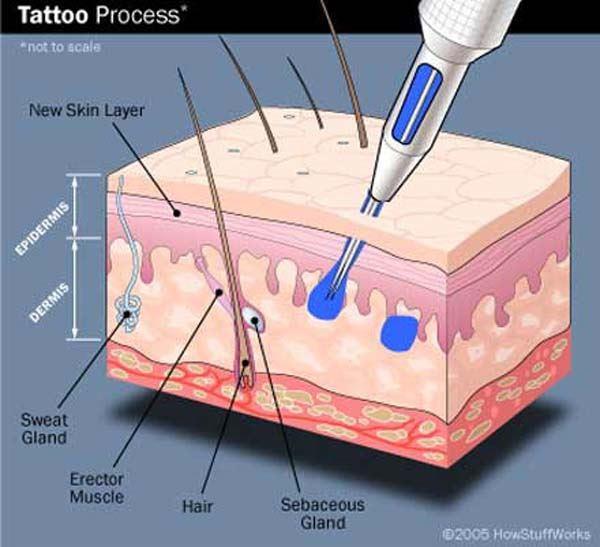

Within a month.
The place of the tattoo usually develops crusts as the wounds heal. It is not recommended to remove them, otherwise you risk getting scars and a distorted image, making it not very attractive.
. Under no circumstances should the tattoo be poked, scratched or otherwise affected. The body itself will cope with the slight disturbance of the skin in a few days.
After a week of daily (several times a day) treatment of a fresh tattoo with recommended ointments (try different: for one person one is better, for another - another) it is possible to apply, for example, child cream again with vitamin F, which costs cheap and is on sale on every corner.
To keep the tattoo looking "fresh", it is a good idea to take vitamin E and moisturize the skin with a lotion, preferably containing aloe. If all conditions are properly followed, such wounds will heal within a month after the tattoo is applied.
One month later
Three to four weeks after the application of a tattoo or permanent makeup, you will again come to the salon to the master, who will make you a correction of a fresh tattoo (usually a free procedure). It will consist of examining the work, finishing up any small details, and applying the necessary additional strokes. If necessary, the area of skin exposed to the procedure can be re-painted. If necessary and by separate agreement with the master such corrections can be several.
During the session
After all the preparatory procedures are carried out, you can go for a tattoo. What rules should be observed to make the session want to repeat, and not to forget, as a nightmare dream:
- Release the day from all affairs in advance and devote it completely to the tattoo session. Do not rush the master and do not distract him. Needed more time than planned? That's okay. After all, it's a tattoo, not a Malabar translation.
- Listen to the artist's advice, don't disturb him with your comments about feelings or inappropriate conversations. Many artists like to immerse themselves in the work and fully commit to the process.
- Do not bring your entire family and friends. Maximum - one close person, and only if the area of the salon allows you to invite someone. Believe me, you will need support only in the first session. From there, it's easier.)
- Try to minimize stressful feelings and not to be nervous. Your inner state directly affects the physical response of your body. The level of pain can be reduced by at least some relaxation. Chewing gum or mints are great.
- You may want to bring a book or player with your favorite music, but the first time you experience a new sensation, you probably won't be able to take your mind off of it.
- Individuals who are prone to fainting spells can bring ammonia. Not to bring to blurred vision - ask beforehand tattoo artist to make a small break if you feel bad. But remember that tattooing is not a massage. And if you "hurt, but tolerable" - it is not a reason to interrupt the work.
Recipes of infusions for healing
For the treatment of traumatized in the process of tattooing skin can be used as ready-made preparations sold in pharmacies, and folk remedies, which without much difficulty can be prepared at home. The above mixtures are poured boiling water (1 cup), then insist 20-30 minutes. The infusion is filtered through gauze and used to wash wounds. Unless otherwise stated.
- 1 tablespoon of dried marigold flowers (marigolds). This remedy has a double effect - it is anti-inflammatory and promotes rapid healing of wounds.
- 1 tablespoon of dried herb St. John's wort pierced. To accelerate the healing process to the wounds, you can apply, pre-mixed in the hands, fresh St. John's wort herb.
- 1 tablespoon dried chamomile flowers
- 1 tablespoon dried oak bark
- 1 tablespoon crushed peppermint leaves
- 1 tablespoon dried cinquefoil grass. The infusion is used in the form of compresses.
- 1 tablespoon crushed stems of horsetail
- 1 tablespoon dried crushed grass clover
- 1 tablespoon crushed herb honeysuckle. This remedy is especially effective for treating festering, abscess wounds.
- 1 tablespoon crushed rhizomes of snake grass
- 1 tablespoon of the herb wheatgrass
- 1 tablespoon chopped nettle leaves
- 1 tablespoon dried plantain leaves. 3 tablespoons of water. Pour warm water over dry material and leave for 15-20 minutes. Then the water is drained and the mass of the leaves are applied to the wound surface. You can also use fresh plantain leaves and squeeze the juice from them. This remedy has a pronounced anti-inflammatory effect.
- 1 tablespoon of crushed rhizomes of the cinquefoil. Infusion strained, dilute with a little water and use to treat wounds. This remedy has antimicrobial and wound-healing effect, is also effective in some skin diseases.
- Burdock leaves. Vegetable oil. Burdock leaves are crushed, the resulting mass is transferred to gauze and squeeze the juice. The resulting juice is mixed with a small amount of vegetable oil (about 1 teaspoon) and used to treat wounds.
- 1 part crushed rhizomes of marsh calamus. 5 parts of 70% alcohol. Water. The ground rhizomes of marsh calamus placed in a jar, pour alcohol, cover and insist for 7 days at room temperature. Then the tincture is drained, steeped for a few days in a cool place and filtered through a folded 3-4 layer gauze. The finished tincture (1 part) diluted with water (3 parts), soaked in it gauze and use to wash wounds.
- 1 tablespoon of crushed roots and rhizomes of yellow gentian. 4 cups of water. The ground roots and rhizomes of yellow gentian pour water, place a container with all the contents on the fire and heated under stirring for 30 minutes. Then the broth is cooled to room temperature, strained and used to treat wounds. A good healing effect in the treatment of pustular wounds gives the use of a mixture of powders taken in equal doses of gentian root and chamomile flowers apothecary.
- 3 cabbage leaves. 1 egg white. Cabbage leaves are washed with running water, dried, shredded and mixed with raw egg white. The resulting mass is applied a thin layer on the wounds and leave for 20 minutes. Means also effective in the treatment of pus-filled, long non-healing wounds and burns.
- 2 carrots. 2 tablespoons water. Fresh carrots are washed, peeled, juiced with a juicer and diluted with a little water. The resulting liquid is treated wounds. Carrot juice helps to cleanse wounds of pus, reduces pain and has a pronounced anti-inflammatory and wound-healing effect.
- Fresh leaves of mother and stepmother The leaves of mother and stepmother are washed with cold water, towel dried and crushed. The resulting mass is transferred to a gauze cloth, folded in several layers, and squeeze the juice. Prepared juice treat wounds.
I want a tattoo, but it is not clear what it is. How to understand it?
Nadya Marynina
Tattoo artist with five years of experience, working in Moscow. Loves graphic drawings.
Explore your feelings and preferences. You can ask questions: "What emotions do I want to get from a tattoo?", "Should it be big or small?", "What subjects do I like: abstraction, cats, flowers, portraits?", "Why do I want a tattoo?". The more you know about yourself, the easier it will be to choose an idea.
It's also worth deciding what exactly you like: large plot tattoos, small individual ones, delicate or rough. To do this you need to see more drawings of different formats and styles. Look at artists' accounts, look at their drawings, go to a tattoo convention. There tattoo artists beat drawings and hold master classes. You can look at the process, the sketches, and talk to the craftsmen. Another option is to go with an approximate idea for a consultation. The tattooist will tell what are the pros and cons of the chosen tattoo, how to place it, whether it will be possible later to continue or complement.
Do not do the tattoo in a hurry. Give yourself a break with the idea for some time. If the idea does not leave you, courageously decide. You can also try on a transferable tattoo. This helps to understand how you feel about the picture on the body. Translators last from two to seven days, but that's enough to see if you need a real one.
